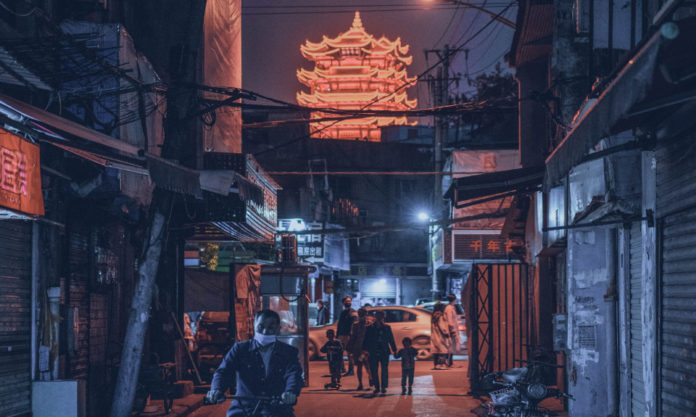Closing the week, it’s time to join hands and consolidate with our comrades in Wuhan. For we are the COVID capitals of China. While we now understand a little of your previous pain, we also have much in common to celebrate.
Alert readers know what’s next. Yesterday, Nanjing recorded just one new Delta Variant case of COVID. Another great drop, thank goodness. That’s 228 in total so far, reports The Paper.
So, we may be getting in the clear, for now, or more or less, but the impact of the outbreak in Nanjing has spread far and wide. And that’s not done us any favours for our reputation elsewhere.
And the new total in case numbers well and truly confirms Nanjing’s position as home to the second-largest COVID outbreak in China.
Back in what seems a very long time ago, as in February-March, 2020, those good, quarantined folks in Wuhan found they would be a little unwelcome elsewhere.
Last year, anytime Nanjingers driving around found themselves behind a car with the license plate suffixed, “鄂A”, many would collectively groan, “Uh oh, they’re from Wuhan”.
Of course, it was a joke. But so it is now with us Nanjingers.
Yep, like the infectious disease we have come to represent, 苏A has now also started disturbing the Chinese nationwide.
But Nanjing and Wuhan have much in common in other, less infectious areas, making for a fitting, informative end to the week.
But first, those annoying vehicle license plates. Away from the municipalities of Beijing, Shanghai, Tianjin and Chongqing, most vehicles (government and military have their own rules, naturally) carry on their license plates a prefix to indicate their province of registration.
This is followed by a letter. “A” stands for the provincial capital, while the alphabet then continues in order, largely, by administrative and historical importance.
For us in Jiangsu, it therefore follows that a car with “苏A” on its plate is registered in Nanjing, while “苏B” is a Wuxi-registered vehicle, since in the past, the city was a much more significant place than the likes of Suzhou, which only manages to be “苏E”, despite its obvious greater influence today.
Back to Hubei Province, where “鄂” is the prefix. And where the following “A” indicates good-old Wuhan.
While “苏” is an obvious abbreviation, “鄂” (E) derives from the “State of E”, the ancient Chinese state in the area that is, by and large, today’s Hubei Province, which flexed its muscles from the 12th century until its overthrow in 863 BCE.
That’s where the differences end.
The similarities, though, really only started coming to the fore when the world’s media became focused on Wuhan late last January. That’s when what had been hiding in plain sight became downright obvious.
Wuhan and Nanjing are both major centres of population on the Yangtze River. By some counts, the biggest.
In addition, together with Chongqing and Nanjing, Wuhan makes up the trio that is the three traditional “furnaces” of China, in reference to the cities’ somewhat warmish summers.
And it doesn’t stop there. If you are a student in Nanjing, chances are you have some classmates from Wuhan. And vice versa. The two cities have been exchanging uni students for decades; not surprising, given their proximity and shared identities.
Bringing us to history, scenery and culture. Previously often dubbed a hard-living kind of a place, the photos that emerged during the city’s unprecedented quarantine revealed a certain majesty. Not unlike our own Nanjing.
For Wuhan is undeniably beautiful.
Now let’s talk bridges. We in the Southern Capital are rightfully proud of our Nanjing Yangtze River Bridge, a visit to which is more or less a pilgrimage for most Chinese.
Wuhan has its own, not dissimilar bridge across the mighty river. They may have been first by a few years, but they needed the Soviets’ help to do it.
Not us in Nanjing. Our Yangtze River Bridge was the first to span the river without foreign help. Hence the pilgrimage.
Oh, and did we forget to mention that Nanjing also briefly ceded its status as capital of China to Wuhan, as the Communists took hold, in 1927? Apologies if we didn’t, but here in the 21st century, the comparisons continue.
Wuhan has also recently become one of the major cities in the world ranked by scientific research output. That will be 13 on a global scale and 4 in China, after Beijing, Shanghai and guess who. Us.
Finally, although we could go on to the point of boredom, Nanjing scooped “Creative City of Literature”, as awarded by UNESCO in 2017, and Wuhan in the same year also nabbed “Creative City of Design”.
While all these similarities ram home, it nevertheless remains that the ramifications of the outbreak in Nanjing won’t be going away anytime soon.
Therefore, don’t be surprised if you receive a few sideways glances from folk in adjacent cars in the coming weeks. Or months. Assuming that is, we get sometime to leave the city.
Barring catastrophe, The Nanjinger hereon resumes its normal coverage. We thank you for allowing us to join you these past 2 weeks.









